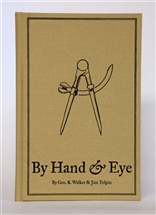 I was out walking Saturday when I came across a mighty oak tree that reminded me of a horse. Not because it looked like a horse but because it’s knarled and deformed trunk had a presence that made the earth holy around it.
I was out walking Saturday when I came across a mighty oak tree that reminded me of a horse. Not because it looked like a horse but because it’s knarled and deformed trunk had a presence that made the earth holy around it.
His name was “Step and fetchit” but everyone reverently called him Step. The great stallions coat was ebony black, and shined purple and blue in the sunlight. In his prime he was the shadow your ancestors saw when the word HORSE galloped across their dreams. He was big and strong and though he might let a man ride him, one never forgot there was something untamed beneath the saddle. That would be a great sin. To miss the beauty of a beast like Step and try to tame him, make him safe, make an ”ish” out of him. Ish is my term for anything that is a poor imitation, something that’s lost the original spark. People serious about dog breeding always bemoan what happens to any breed cursed with popularity. Suddenly everyone is out there selling Labrador Retrievers and you begin to see Labradorish things you wouldn’t want to take home to meet your mother. Sadly we see this happen with furniture. Americans rediscovered the wonder of 18th century furniture in the early part of the 20th and copied it to death. I know there are plenty of woodworkers out there that have little use for period work, and my take is that they have had a belly full of early Americanish crap. Clones of clones, many generations removed with no fire, not even a spark of the original genius.
Don’t get me wrong, this isn’t a tirade against those who do reproductions. On the contrary, a good reproduction usually results when someone goes to the trouble to get close enough to Step, to feel his powerful lungs pushing wind from his nostrils. A good reproduction of a master work is on par with a great orchestral performance.
This tendency to ish by imitation isn’t confined to period work. There’s plenty of Arts and Craftish stuff out there, and we will probably be looking at Krenovish and Malloofish furniture for the next fifty years. There’s a very fine line between copying something and capturing the spirit of greatness that elevates a masterwork. One of the tenants of the historic traditional approach is that a designer should strive to build on what has gone on before, not break but extend the chain of creativity. The highest praise we can offer an artisan is if they can create something that respects the past yet says something new. Sort of one eye glancing backwards, yet looking for new ways to express beauty. That’s actually an ideal I strive for and at the same time feel humbled by. It’s why I keep going back to nature, and old furniture and architecture. I’m looking for that spark, that fire that makes something alive and never quite tame. Step and fetchit is long gone, but somewhere there’s a wild piece of wood waiting to be made into something exquisite and unsafe and wonderful.
George R. Walker





Very interesting. My experience with Greene and Greene furniture was colored by the -ish. I really never liked Greene and Greene furniture, because I was always looking at what others called “Greene and Greene”. Then I saw what real Greene and Greene was and was blown away. There was an article in Fine Woodworking, by Gary Rogowski not too long ago I think. He said much of what you see out there are photo copies, of photo copies, of photo copies. Much of the essence has been lost or blurred away. I think this happens to just about every period or style of furniture. I’ve learned you need to do some digging, if you want to truly know what a given period was really about.
I’ve heard this numerous times from woodworkers who stumbled onto an original work in a museum and saw something truly inspiring.